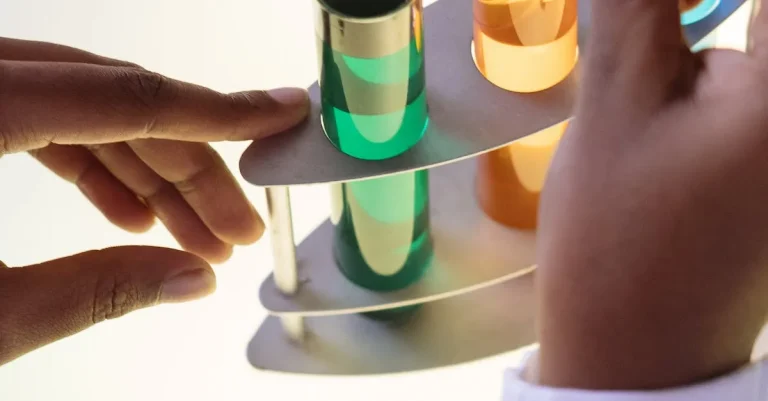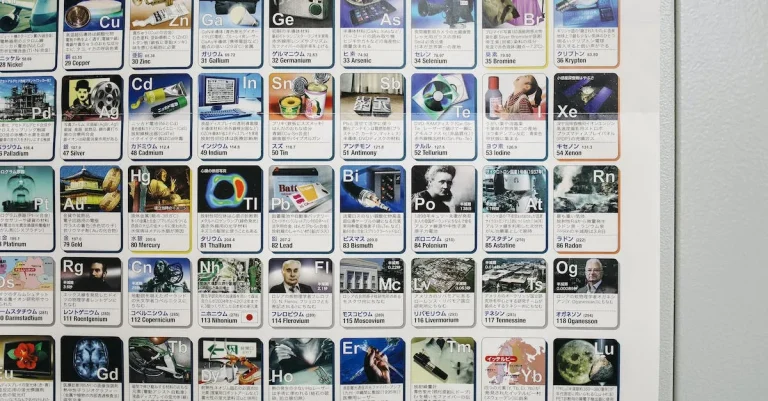The Interconnected Relationship Between Science And Technology
Science and technology influence each other in profound ways to fuel innovation and discovery. But what exactly is the relationship between these two disciplines, and how do they build upon one another?
In this comprehensive 3000 word article, we’ll analyze the dynamic interplay between scientific advancement and technological development. We’ll look at real-world examples of how basic scientific research has led to revolutionary technologies, as well as how new technologies have opened doors for scientific exploration.
How Science Drives Technology
Science and technology are deeply interconnected, with scientific discoveries often driving technological advancements. Through research and experimentation, scientists uncover new knowledge and understanding of the natural world, which in turn opens up possibilities for the development of new technologies.
Scientific discoveries enabling new technologies
Many of the technological marvels we enjoy today are a direct result of scientific breakthroughs. For example, the discovery of electricity by Benjamin Franklin and subsequent research by scientists like Michael Faraday paved the way for the development of electrical power systems and the technology we rely on today.
Without these scientific discoveries, our world would be without the conveniences of electricity, from lighting our homes to powering our devices.
Another example is the field of genetics. The mapping of the human genome has provided scientists with a wealth of information about our genetic makeup and has led to the development of technologies such as gene editing and personalized medicine.
These scientific breakthroughs have the potential to revolutionize healthcare and improve the lives of millions of people.
Research leading to unexpected technological applications
Sometimes, scientific research can lead to unexpected technological applications. A prime example of this is the development of the internet. Originally a military research project, the internet has transformed the way we communicate, access information, and conduct business.
It is a testament to how scientific research can lay the foundation for technological innovations that have far-reaching impacts.
Similarly, advancements in materials science have led to the development of stronger and lighter materials, such as carbon fiber composites. Initially developed for aerospace applications, these materials are now used in a wide range of industries, from automotive to sports equipment.
The research and understanding of the properties of materials have opened up new possibilities for technological advancements.
Ongoing science pushing boundaries of what’s technologically possible
Science is a constantly evolving field, with new discoveries and advancements being made every day. Ongoing scientific research pushes the boundaries of what is technologically possible, opening up new frontiers and possibilities.
For instance, the field of artificial intelligence (AI) is constantly evolving and pushing the limits of what machines can do. Through scientific research in areas such as machine learning and neural networks, scientists are developing AI technologies that can perform complex tasks, such as image recognition and natural language processing.
These advancements have the potential to revolutionize industries such as healthcare, finance, and transportation.
How Technology Catalyzes Science
Technology and science are intrinsically linked, with advancements in one field often driving progress in the other. In today’s rapidly evolving world, technology plays a crucial role in catalyzing scientific research and discovery.
Here are three key ways in which technology has been instrumental in advancing scientific knowledge:
New tools allowing more advanced scientific research
One of the most significant ways technology has catalyzed science is through the development of new tools and instruments. These tools enable scientists to explore and understand the natural world in ways that were previously unimaginable.
For example, the invention of powerful microscopes has allowed scientists to study cells and microorganisms at the molecular level, leading to groundbreaking discoveries in biology and medicine. Similarly, the advent of sophisticated telescopes and space probes has revolutionized our understanding of the universe, uncovering new celestial bodies and unraveling the mysteries of outer space.
Technological capabilities driving new scientific questions
Advancements in technology not only enhance our ability to answer existing scientific questions but also drive the emergence of new questions and fields of study. For instance, the development of DNA sequencing technologies has opened up exciting avenues of research in genomics, leading to breakthroughs in personalized medicine and genetic engineering.
Similarly, the rise of artificial intelligence and machine learning has sparked a surge of interest in the field of computational neuroscience, as scientists seek to understand how the brain processes information and mimics cognitive functions.
High-powered computing accelerating the pace of discovery
The exponential growth of computing power has had a profound impact on scientific research. High-performance computers and advanced algorithms enable scientists to process vast amounts of data, simulate complex phenomena, and conduct virtual experiments.
This computational power has revolutionized fields such as climate modeling, drug discovery, and particle physics. For example, in the field of climate science, supercomputers are used to model and predict weather patterns, simulate the effects of climate change, and inform policy decisions.
In particle physics, powerful computers are crucial in analyzing the enormous amounts of data generated by particle accelerators, helping scientists uncover new particles and deepen our understanding of the fundamental building blocks of the universe.
Overlapping Processes and Skills
Science and technology are closely intertwined, with overlapping processes and skills that contribute to their interconnected relationship. These processes and skills are essential for both scientific research and technological development, ensuring that advancements are made in a systematic and informed manner.
Asking questions and defining problems
One key process that is common to both science and technology is asking questions and defining problems. In science, this involves formulating hypotheses and identifying areas of inquiry. In technology, it entails recognizing needs and identifying problems that can be solved through innovation.
Both scientists and technologists strive to understand the world around them and seek solutions to challenges that arise.
For example, a scientist might ask, “What is the effect of temperature on plant growth?” while a technologist might ask, “How can we develop a more efficient solar panel?” These questions drive research and development, leading to new discoveries and technological advancements.
Developing and testing solutions
Another important process shared by science and technology is the development and testing of solutions. In science, this involves conducting experiments and making observations to test hypotheses. In technology, it entails designing prototypes and conducting trials to assess functionality and effectiveness.
Scientists and technologists both employ rigorous methods to validate their ideas and ensure that their solutions are viable. They gather data, analyze results, and make adjustments as needed. This iterative process allows for continuous improvement and refinement of scientific theories and technological innovations.
Analyzing data and drawing conclusions
Analyzing data and drawing conclusions is a critical skill that is integral to both science and technology. In science, researchers collect and analyze data to support or refute hypotheses, drawing conclusions based on the evidence.
In technology, engineers and developers analyze data to assess the performance and impact of their innovations.
By examining data, scientists and technologists can identify patterns, trends, and correlations that provide valuable insights. These insights inform future research and development, driving further advancements in both scientific understanding and technological capabilities.
The interconnected relationship between science and technology is evident in the shared processes and skills they employ. By asking questions, defining problems, developing and testing solutions, and analyzing data, scientists and technologists contribute to the progression of knowledge and the development of innovative technologies.
Key Collaborations Between Science and Technology
Medicine: Imaging, diagnostics, devices, and drugs
One of the most significant collaborations between science and technology can be seen in the field of medicine. Advancements in imaging technology, such as magnetic resonance imaging (MRI) and computed tomography (CT) scans, have revolutionized the way diseases and injuries are diagnosed.
These imaging techniques allow doctors to obtain detailed images of the internal structures of the human body, aiding in accurate diagnosis and treatment planning.
Additionally, technology plays a crucial role in the development of medical devices and drugs. From pacemakers and prosthetic limbs to robotic surgical systems, technology has enabled remarkable advancements in healthcare.
Moreover, scientists and researchers work closely with technologists to develop new drugs, utilizing state-of-the-art equipment and computer models to predict drug interactions and efficacy.
Space Exploration: Rockets, telescopes, satellites, and probes
The collaboration between science and technology has propelled humanity’s exploration of space. Rockets designed by engineers and propelled by advanced propulsion systems allow us to launch satellites and spacecraft into orbit and beyond.
These technological marvels have led to groundbreaking scientific discoveries and have provided us with a deeper understanding of the universe.
Telescopes, both on Earth and in space, have been instrumental in expanding our knowledge of the cosmos. The Hubble Space Telescope, for example, has captured breathtaking images of distant galaxies, helping astronomers unravel the mysteries of the universe.
Satellites and probes equipped with advanced scientific instruments have also been deployed to explore other planets and celestial bodies, providing invaluable data to scientists studying planetary science.
Climate Science: Sensors, data modeling, renewable energy
In the field of climate science, the collaboration between science and technology is crucial for monitoring and understanding the Earth’s changing climate. Sensors and monitoring devices, such as weather stations and satellites, collect vast amounts of data on temperature, precipitation, and atmospheric conditions.
This data is then analyzed and modeled using advanced computer algorithms and models, allowing scientists to make accurate predictions about climate patterns and changes. Technology also plays a vital role in the development of renewable energy sources, which are essential for combating climate change.
From solar panels to wind turbines, technological innovations have made renewable energy more efficient and accessible.
Cultivating Interdisciplinary STEM Education
In today’s rapidly advancing world, the relationship between science and technology has become increasingly interconnected. As such, it is crucial to cultivate interdisciplinary STEM (Science, Technology, Engineering, and Math) education to equip students with the skills and knowledge necessary to thrive in the 21st-century workforce.
Integrating science, technology, engineering, and math
Gone are the days when science, technology, engineering, and math were taught as separate subjects. Educators now understand the importance of integrating these disciplines to provide a holistic learning experience.
By combining the principles of science and technology, students can better understand the real-world applications of their knowledge and develop a deeper appreciation for the interconnectedness of these fields.
For example, in a physics class, students can use computer simulations to visualize complex concepts and understand how they relate to engineering and technology. By incorporating hands-on experiments and coding exercises, students can explore the practical application of scientific principles and develop their problem-solving skills.
Problem-based learning with real-world applications
One of the key approaches to cultivating interdisciplinary STEM education is through problem-based learning. This teaching method encourages students to apply their knowledge to real-world challenges, fostering critical thinking and creativity.
By presenting students with authentic problems, they are motivated to explore interdisciplinary solutions that incorporate science, technology, engineering, and math.
For instance, students might be tasked with designing a sustainable energy system for a community. In this scenario, they would need to draw on their understanding of physics, technology, and math to develop innovative solutions.
This hands-on approach not only enhances their subject knowledge but also instills in them the ability to think critically and work collaboratively – vital skills for future success.
Preparing adaptable thinkers and innovators
The integration of science, technology, engineering, and math in education is not just about teaching specific subject matter. It is about preparing students to become adaptable thinkers and innovators who can tackle the challenges of an ever-evolving world.
By fostering interdisciplinary learning, students develop the ability to approach problems from multiple perspectives and find creative solutions.
Moreover, interdisciplinary STEM education equips students with the skills necessary to navigate the complex and rapidly changing technological landscape. With advancements in fields such as artificial intelligence, robotics, and biotechnology, it is crucial for students to have a solid foundation in science and technology.
By cultivating interdisciplinary learning, educators can ensure that students are well-prepared to thrive in these emerging fields.
Conclusion
For centuries, science and technology have worked synergistically to drive humanity forward. Scientific breakthroughs spark technological advances, which in turn fuel new scientific discovery in a virtuous cycle.
By studying their past intersections and cultivating interdisciplinary thinking, we can learn to harness science and technology cooperatively to create innovations that improve lives and societies.







